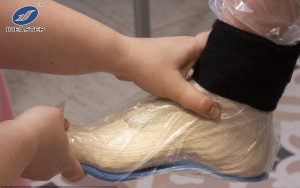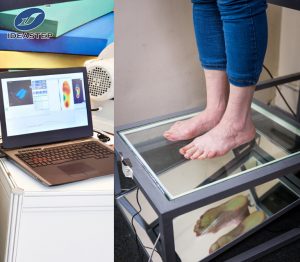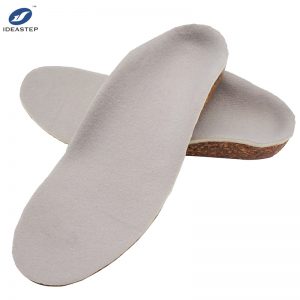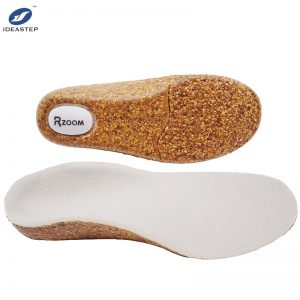Medical insoles that adapt to the shape of the wearer’s feet
Active insole is a product that can change the ground to adapt to the personal foot shape of the wearer. Just as many people need to wear glasses (technically referred to as visual correction), people with lower limb biomechanical abnormalities or people with these abnormal foot mechanical problems need to wear corrected products to orthopedic insoles.
The orthopedic insole is designed according to the biomechanical of the foot, and the unique dual -density 100%EVA (ethylene acetate ethyl acetate) structure allows the creation and extensive modification and partial angle on the orthopedic insole to make it a customized orthopedic insole, which can be used to use Gypsum plastic mold, directly fixed on the patient’s feet, can provide sufficient space and protection in the foot. The orthopedic insole can be heated and plasticized on the patient’s feet or plaster molds. It can also be polished and formed with a tabletop wheels, and various bending angles can be shaped under heating and pressing (these angles can also be eliminated by heating). The orthopedic insole is based on the principle of biomechanics, and the ﹝ created by the normal mode of normal people is based on the normal human mechanical structure. Set the angle of the 5 ° heel to improve it to the most powerful and walking angle. Make balance and coordination with the support and stability of the pelvis. The design combines a unique angle and curve, and the patented dual -density system provides the dual benefits of support and comfort.
introduce
The orthopedic insole is supplemented by the NAS evaluation method, from bottom to top, from the foot to the spine’s series of detailed evaluation, measured: heel the inner/outward angle, the anterior feet in the forefoot/the angle of the tibial/outer transition, the femoral bone bone, the femoral bone bone, the femur Internal and external turn angles, feet length differences, pain conditions and gait observation, the most suitable materials and correction methods are selected according to individuals.
Material
There are many orthopedic insole materials, including nylon, EVA foam, polypropylene, polyethylene, including the current popular 3D printing materials. Different materials have different mechanical attributes.
structure
The structure of orthopedic insoles varies from person to person. It is based on different problems of each patient to design targeted orthopedic insoles, so as to work. As for how to design orthopedic insoles, this cannot be summarized in a simple sentence, because it involves the understanding and understanding of the disease, and has medical knowledge, clinical experience, and related biomechanical foundations. The price of orthopedic insoles is actually only related to the prescription of the orthopedic insole design, because the added value given by the designer here is condensed.
Case of insoles
Balanced analysis of foot gait, underground pressure test → 3 -dimensional scanning foot type → CAD reasonable adjustment and design → CAM data processing or additive manufacturing (3D printing technology) → exclusive insole, shoes → select shoes → exclusive shoes customization → Try to penetrate.
For more information, please visit https://www.aideastep.com/custom-orthotic/




